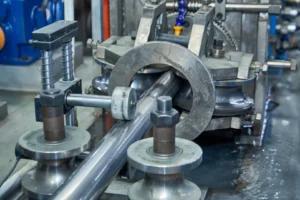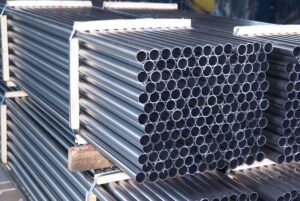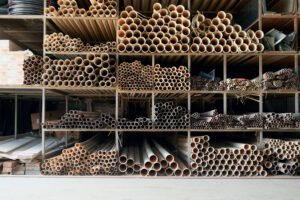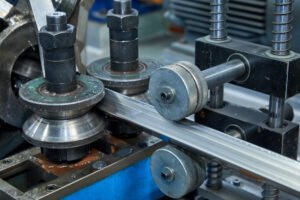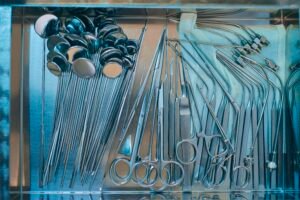From Dubai Skyscrapers to Jakarta Oil Rigs: Real-World Wins with Tube Manufacturing Machinery
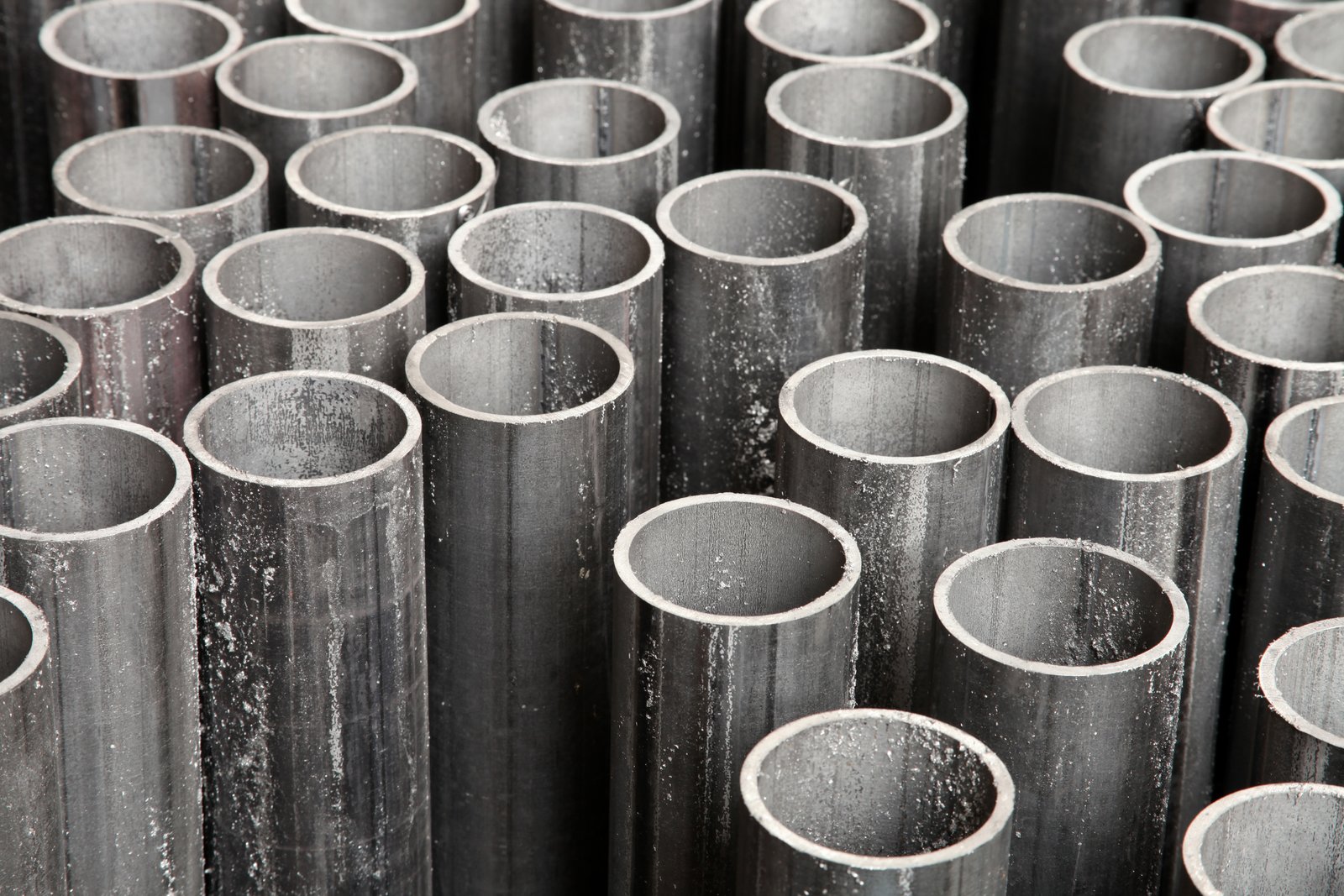
Are you struggling to meet the demanding specifications and tight deadlines of large-scale construction or industrial projects? The hidden culprit might be your manufacturing equipment, leading to material waste and costly delays. Imagine delivering flawless, high-performance tubing on time, every time, boosting your reputation and bottom line.
Tube manufacturing machinery is the backbone of major global projects, from architectural marvels like Dubai's skyscrapers to critical energy infrastructure such as Jakarta's oil rigs. It enables the high-volume production of precision-engineered tubes that meet stringent standards for strength, tolerance, and material integrity.
For over 15 years, I've seen firsthand how the right machinery can make or break a project. It’s not just about bending and welding metal; it’s about empowering ambitious visions to become reality. The difference between a landmark that stands for centuries and a project plagued by setbacks often comes down to the quality and precision that begins on the factory floor.
This isn't just a theoretical exercise. The demand for specialized, high-performance tubing is exploding globally1, driven by relentless urbanization and the constant search for new energy sources. In my experience, companies that invest in advanced manufacturing technology aren't just buying a machine; they are buying certainty. Certainty of quality, certainty of output, and certainty of meeting the client's most exacting demands. We will explore real-world examples from two vastly different but equally demanding environments—the gleaming architectural hub of Dubai and the rugged offshore oil fields of Indonesia—to see how superior tube manufacturing machinery provides the critical edge for success.
What are the key projects in Dubai that utilized tube manufacturing machinery?
Ever worried that the stainless steel tubes for your high-profile architectural project won't meet the architect's aesthetic and structural demands? Poor quality can lead to rejection and financial loss. Our precision machinery ensures every tube is perfect, securing your project's success and your reputation.
In Dubai, advanced tube manufacturing machinery is crucial for creating structural frames, decorative facades, and essential plumbing and HVAC systems for iconic skyscrapers like the Burj Khalifa and other high-rise developments. This equipment produces the high-strength, aesthetically perfect stainless steel tubing required by modern architecture.
The dazzling skyline of Dubai is a testament to bold architectural vision and uncompromising engineering. Behind the shimmering glass and soaring steel skeletons are countless components that must perform flawlessly, and high-quality tubing is one of the most fundamental. From the intricate latticework of a skyscraper's facade to the miles of critical plumbing and HVAC conduits hidden within its walls, the demand for precision-engineered tubes is immense. I recall working with a client in the UAE who was bidding on a contract for a new luxury hotel complex. They knew that winning the bid depended on their ability to guarantee a consistent supply of decorative stainless steel tubes with a mirror finish and tolerances that were almost impossibly tight. Their existing equipment simply wasn't up to the task. This scenario is common in a market where architectural ambition constantly pushes the boundaries of what's possible, forcing manufacturers to adopt more sophisticated production solutions. The ability to produce tubing that is not only strong and durable but also meets a high aesthetic standard is no longer a luxury—it's a prerequisite for entry into this competitive market. This is where the capabilities of modern tube mills become the differentiator between winning a landmark project and being left on the sidelines.
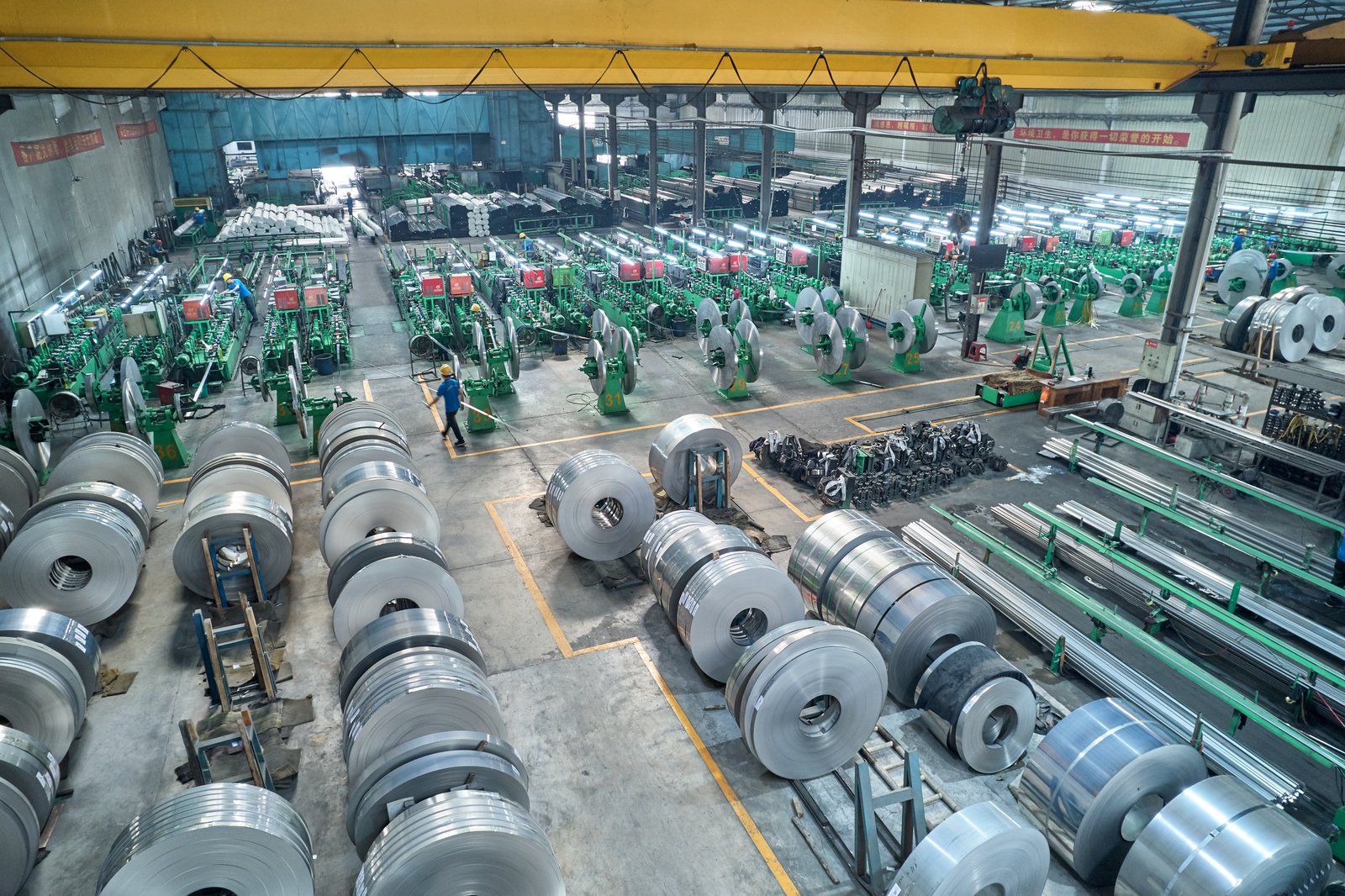
The application of precision-manufactured tubes in a city like Dubai goes far beyond simple pipes. It's an integral part of an architectural language that speaks of luxury, innovation, and structural daring. The city’s building codes are among the most stringent in the world, and the desert environment, with its extreme temperatures and potential for wind-driven sand, places unique demands on building materials. For manufacturers supplying to this market, it's a high-stakes environment where quality is non-negotiable.
The Dual Demands of Aesthetics and Structural Integrity
In Dubai's architectural landscape, stainless steel is often chosen for its combination of strength and corrosion resistance, but more importantly, for its sleek, modern appearance2. For elements like curtain wall frames, decorative balustrades, and external cladding supports, the surface finish and dimensional accuracy are paramount. Any imperfection, however minor, can compromise the visual harmony of the entire structure. I remember a case with a client, let's call them "Gulf Architectural Fabricators," who secured a contract for the decorative metalwork on a new waterfront promenade. The design called for thousands of polished, oval-shaped stainless steel tubes that had to fit together seamlessly. Our intelligent precision stainless-steel welding-pipe production line was their chosen solution. The key was its ability to maintain a tolerance of ≤ ±0.05 mm, which ensured that every single piece was identical, allowing for rapid, flawless assembly on-site.
Furthermore, these aesthetic elements are not merely decorative; they are often integral to the building's structural system. They must withstand high wind loads and thermal expansion and contraction cycles without failing. This requires a weld seam of exceptional strength and uniformity, something that our energy-saving high-frequency welding technology is designed to deliver. The process ensures deep penetration and a strong metallurgical bond, creating a tube that is as strong as its seamless equivalent but can be produced far more efficiently.
The challenge for Gulf Architectural Fabricators was twofold: achieve a perfect mirror polish and guarantee the structural specifications. Our round/square pipe automatic polishing machines were integrated into their line, creating a seamless production flow from welding to finishing. This automated process eliminated the inconsistencies of manual polishing and delivered the high-end finish the architects demanded, while the precision of the tube mill itself guaranteed the engineering requirements were met. It's a perfect example of how integrated systems are necessary to meet the dual challenges of modern architectural projects.
Meeting Aggressive Timelines with Automated Efficiency
The pace of construction in Dubai is relentless. Delays on one component can have a cascading effect, leading to massive budget overruns and penalty clauses. For a tube manufacturer, this means being able to produce high volumes of product to a just-in-time schedule without ever sacrificing quality. This is where automation becomes a game-changer. Our production lines, equipped with fully automated PLC + touch-screen controls, allow for continuous, 24/7 operation with minimal human intervention. This drastically reduces the chance of human error and ensures a consistent output rate that manual or semi-automated systems could never hope to match.
Consider the sheer scale of a project like a new airport terminal or a sprawling shopping mall. These require kilometres of tubing for everything from fire suppression systems to handrails. A key feature that proved critical for another client, a major MEP contractor, was our quick-change tooling system. Their project involved dozens of different tube diameters and profiles. In the past, changing the rollers and tooling on a mill could take an entire shift, leading to costly downtime. With our system, the same changeover can be completed in just a couple of hours.
This flexibility allows manufacturers to respond instantly to changing requirements from the construction site, producing specific batches of different tube sizes on demand. This agility is essential in a dynamic construction environment. The high material utilization rate of our machines, reaching up to 98%, also played a huge role. By minimizing scrap, our client was able to reduce material costs significantly, giving them a more competitive edge in their bidding process. It’s a clear demonstration of how machine efficiency translates directly to project profitability and timeline adherence.
A Real-World Win: The "Infinity Tower" Case Study
While I must protect my client's confidentiality, I can share the story of a project conceptually similar to many in Dubai, which we'll call the "Infinity Tower." The contractor for this 80-story mixed-use skyscraper faced a monumental task: fabricating a complex exoskeleton that served as both the primary structural support and the defining aesthetic feature. The design involved thousands of custom-profile, high-strength stainless steel tubes that had to be produced to an incredibly high standard. The project's success hinged on the manufacturer's ability to deliver.
Our client chose our reinforced heavy-duty welding-pipe machine, customized for their specific profile. The robust, CNC-machined frame of the mill was essential for handling the thick-walled, high-tensile material without vibration or deflection, ensuring absolute consistency over long production runs. The automated PLC system was programmed with the precise specifications for each unique tube section, ensuring every component was a perfect match to the digital blueprint.
The table below illustrates the critical difference our technology made compared to the standard equipment they had used previously.
| Feature | Standard Tube Mill | XZS Heavy-Duty Tube Mill | Impact on "Infinity Tower" Project |
|---|---|---|---|
| Precision Tolerance | ±0.20 mm | ≤ ±0.05 mm | Ensured perfect fit-up of exoskeleton nodes, eliminating on-site rework. |
| Material Utilization | ~85% | Up to 98% | Saved over $1.2M in high-grade stainless steel costs. |
| Tooling Changeover | 6-8 hours | < 2 hours | Allowed for agile, on-demand production of 25 different profiles, keeping pace with construction. |
| Welding Technology | Standard TIG | Energy-Saving High-Frequency | Produced stronger, more reliable welds crucial for structural integrity. |
The result was a resounding success. The contractor delivered all components ahead of schedule and under budget, citing the reliability and precision of our machinery as the single biggest contributing factor. They not only avoided costly delays but also enhanced their reputation as a leader in complex architectural fabrication. This is the kind of tangible, real-world win that defines our mission at XZS.
How did tube manufacturing machinery contribute to the efficiency of Jakarta's oil rigs?
Concerned that your pipelines for offshore applications might fail under pressure, leading to environmental disaster and massive financial penalties? Sub-standard tubing is a risk you can't afford. Our machinery produces pipes with superior weld integrity, ensuring the safety and longevity of your critical infrastructure.
For Jakarta's oil rigs, tube manufacturing machinery is vital for producing large-diameter, heavy-duty carbon and stainless steel pipes used in structural jackets, risers, and process piping. This machinery ensures high weld quality and material durability, which are essential for operational efficiency and safety in harsh marine environments.
Moving from the pristine architectural world of Dubai to the demanding offshore environment of Indonesia, the challenges change, but the need for precision and reliability3 only intensifies. Near Jakarta, the oil and gas industry is a cornerstone of the economy, and the offshore platforms operating in the Java Sea are complex feats of engineering that operate under constant stress. The efficiency, safety, and profitability of these rigs are directly tied to the integrity of their components, particularly the vast network of tubing and pipelines that form their skeletons and arteries. A single failure in a weld seam on a critical pipeline can lead to a shutdown costing millions of dollars per day, not to mention the catastrophic environmental risk. I worked with an Indonesian EPC contractor who was tasked with expanding an existing offshore platform. Their primary concern was sourcing thick-walled, large-diameter pipes that could withstand the corrosive saltwater environment and the immense pressures of deep-sea extraction. They needed a manufacturing solution that could not only handle the scale but also provide certifiable quality assurance for every single meter of pipe produced. This is a world away from decorative architectural tubes; here, performance is a matter of operational survival.
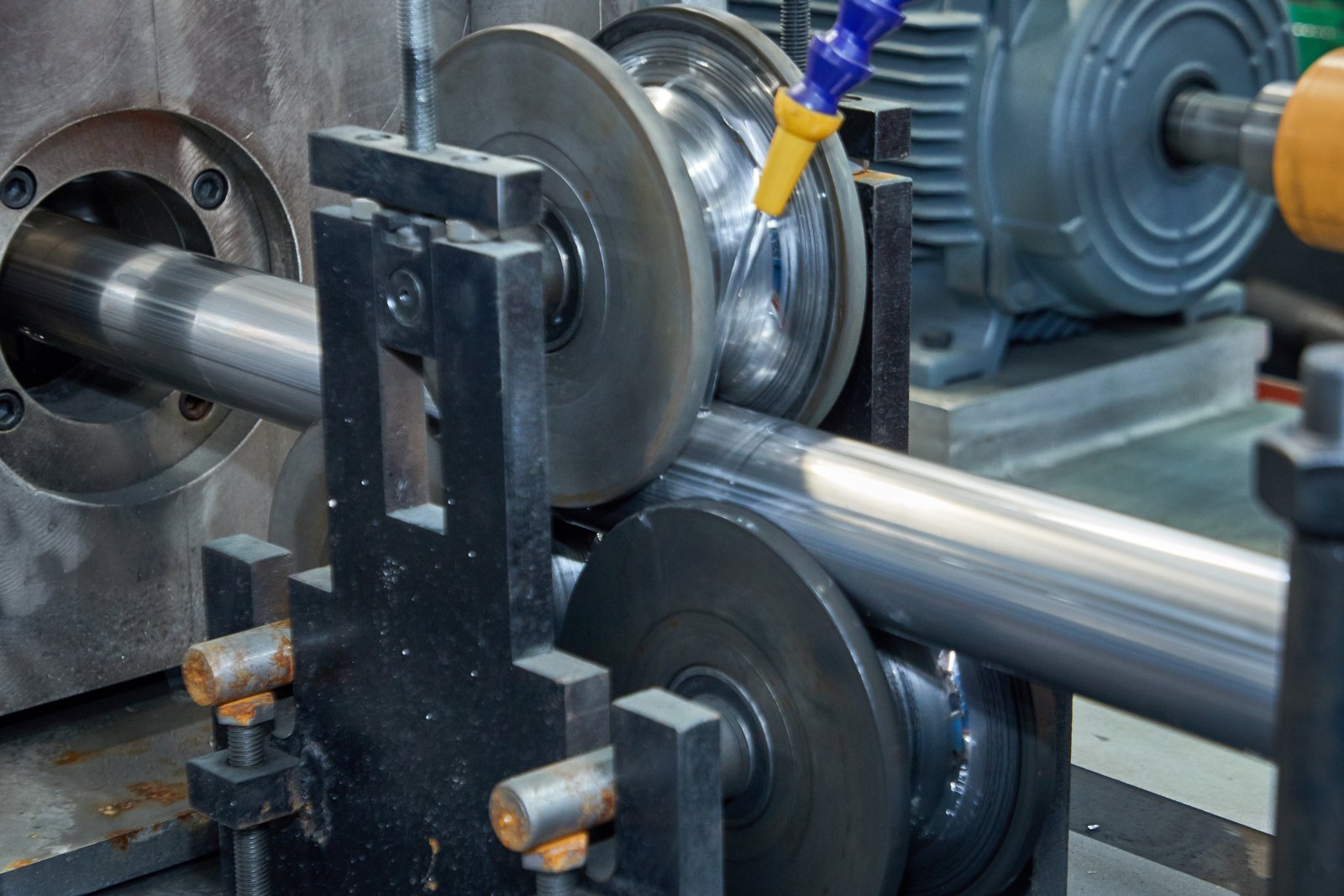
In the offshore oil and gas industry, efficiency isn't just about speed; it's about uptime, safety, and longevity. The machinery used to manufacture the foundational components of an oil rig must deliver unwavering reliability. The tubes and pipes used in these structures are subjected to a brutal combination of internal pressure, external water pressure, corrosive salt spray, and dynamic loads from waves and currents. There is no margin for error. The contribution of advanced tube manufacturing machinery is, therefore, foundational to the entire operation4.
Engineering for a Hostile Marine Environment
The primary challenge in any offshore application is corrosion. Saltwater is relentlessly aggressive, and any weakness in a pipe's material or weld is an invitation for catastrophic failure. For this reason, specifications for offshore projects, often governed by standards like API (American Petroleum Institute)5, are incredibly strict. Our client in Jakarta, "Nusantara Offshore," needed to produce pipes for a platform jacket—the submerged steel leg structure that supports the topside facilities. These pipes were large in diameter and had wall thicknesses exceeding 15mm. They selected our large-diameter industrial welding-pipe machine for this task.
The first line of defense is the material itself, often specialized grades of carbon steel with protective coatings, or in some cases, corrosion-resistant alloys. However, the weak point is almost always the weld seam. Our tube mills utilize a high-frequency induction welding process that creates a true forged weld. The edges of the steel are heated to a plastic state and then forged together under immense pressure, creating a fine-grained, homogenous seam that is virtually indistinguishable from the parent material in terms of strength and corrosion resistance. This is vastly superior to conventional arc welding methods, which can leave impurities or structural inconsistencies that become focal points for corrosion.
Furthermore, the robust, CNC-machined frame of our heavy-duty mills ensures the stability required to process these massive pipes. Any vibration during the welding process can compromise the integrity of the seam. By ensuring a rigid and stable platform, our machinery provides the consistency needed to produce thousands of meters of pipe, with every inch meeting or exceeding API standards. This was the assurance Nusantara Offshore needed to guarantee the 30-year design life of the platform jacket.
The Economics of Uptime and Reliability
On an oil rig, downtime is the enemy. Every hour that production is halted translates into enormous revenue loss. Therefore, the reliability of every component is an economic necessity. The efficiency of tube manufacturing machinery contributes to this in two ways: first, by producing pipes that are inherently reliable, and second, by enabling efficient construction and maintenance. When pipes are manufactured to exact dimensional tolerances, the on-site assembly process is significantly streamlined.
For the topside processing facilities on the rig, Nusantara Offshore used our industrial precision tube mill to fabricate the network of pipes that transport oil, gas, water, and various chemicals. The ≤ ±0.05 mm precision of our machines ensured that every flange, valve, and fitting aligned perfectly. This drastically reduced the time needed for welding and assembly on the cramped and hazardous environment of the platform, a significant factor in project efficiency and safety. Any on-site modification or rework is not only time-consuming but also introduces additional risks.
I recall a specific challenge they faced with needing to produce both carbon steel pipes for the main structure and smaller-diameter stainless-steel tubes for instrumentation and hydraulic systems. Their investment in a flexible production line with quick-change tooling allowed them to switch between materials and sizes with minimal downtime. This versatility meant they didn't need separate, dedicated lines, saving valuable factory space and capital investment. The fully automated PLC control system logged the production parameters for every batch, providing a complete quality assurance record that was crucial for certification by regulatory bodies.
A Real-World Win: The "Java Deepwater" Platform
Let's look at a representative case, the "Java Deepwater" platform project. The contractor, our client Nusantara Offshore, was under immense pressure to deliver the platform components on an accelerated schedule to meet a drilling window. Their biggest bottleneck was the production of the heavy-wall, large-diameter piles and structural pipes. Their previous supplier had struggled with maintaining consistent weld quality, leading to a high rejection rate during ultrasonic testing.
They installed our large-diameter tube mill, and the impact was immediate. The combination of the high-frequency welder and the rigid, vibration-dampening machine frame resulted in a weld quality that was consistently flawless. Their rejection rate dropped from nearly 15% to less than 1%. This single improvement had a massive ripple effect across the entire project.
| Metric | Previous Supplier's Output | XZS Large Diameter Tube Mill | Impact on "Java Deepwater" Project |
|---|---|---|---|
| Weld Rejection Rate | 15% | < 1% | Eliminated production bottlenecks and a key source of project delays. |
| Production Speed | 15 meters/min | 25 meters/min | Increased throughput by over 60%, allowing them to meet the tight deadline. |
| Material Handling | Heavy-duty Carbon Steel | Heavy-duty Carbon & Stainless Steel | One machine could handle multiple project requirements, improving ROI. |
| QA/QC Documentation | Manual Logs | Automated PLC Data Logging | Provided instant, verifiable quality reports for client and regulatory approval. |
The increased production speed and near-zero rejection rate meant they could manufacture the required tonnage of pipe weeks ahead of the original schedule. This allowed the platform jacket to be transported and installed before the onset of the monsoon season, a critical project milestone. The project manager later told me that the reliability of the tube mill was the "hero" of the fabrication phase, directly enabling them to avoid millions in potential penalties for delays. This is the tangible impact of deploying machinery that is truly fit for purpose in the world's most demanding industries.
What challenges were faced in these projects and how were they overcome using advanced tube manufacturing machinery?
Facing a project with extreme environmental conditions, complex specifications, and impossible deadlines? These combined challenges can seem insurmountable, threatening your profitability. The right manufacturing technology is the key to turning these complex challenges into a competitive advantage by delivering precision and efficiency.
Key challenges included meeting stringent architectural and structural codes in Dubai and combating harsh marine corrosion in Jakarta. Advanced tube machinery overcame these with features like high-precision controls (≤ ±0.05 mm tolerance), superior high-frequency welding for seam integrity, and automated systems for high-volume, consistent output.
Every major engineering project is, at its core, a battle against challenges. Whether it's the scorching heat and architectural ambition of a Dubai skyscraper or the corrosive saltwater and immense pressures of a Jakarta oil rig, the path from blueprint to reality is fraught with obstacles. As a machinery supplier, I’ve had a front-row seat to these battles. The common thread I've observed is that project success often hinges on the capabilities of the foundational manufacturing technologies being used. Simple, off-the-shelf solutions are rarely adequate when facing multi-faceted challenges that span environmental hostility, complex engineering demands, and immense commercial pressure. I recall a conversation with a project director who managed procurements for both urban and industrial developments. He told me, "Victor, my biggest headache isn't a single problem. It's when the problems start to stack up. We need a solution for a corrosive environment, and it has to meet a complex geometric design, and it has to be delivered yesterday." This is the modern reality. Overcoming these stacked challenges requires machinery that is not just powerful or fast, but intelligent, flexible, and fundamentally reliable. It’s about having a toolbox deep enough to solve multiple, interconnected problems at once.
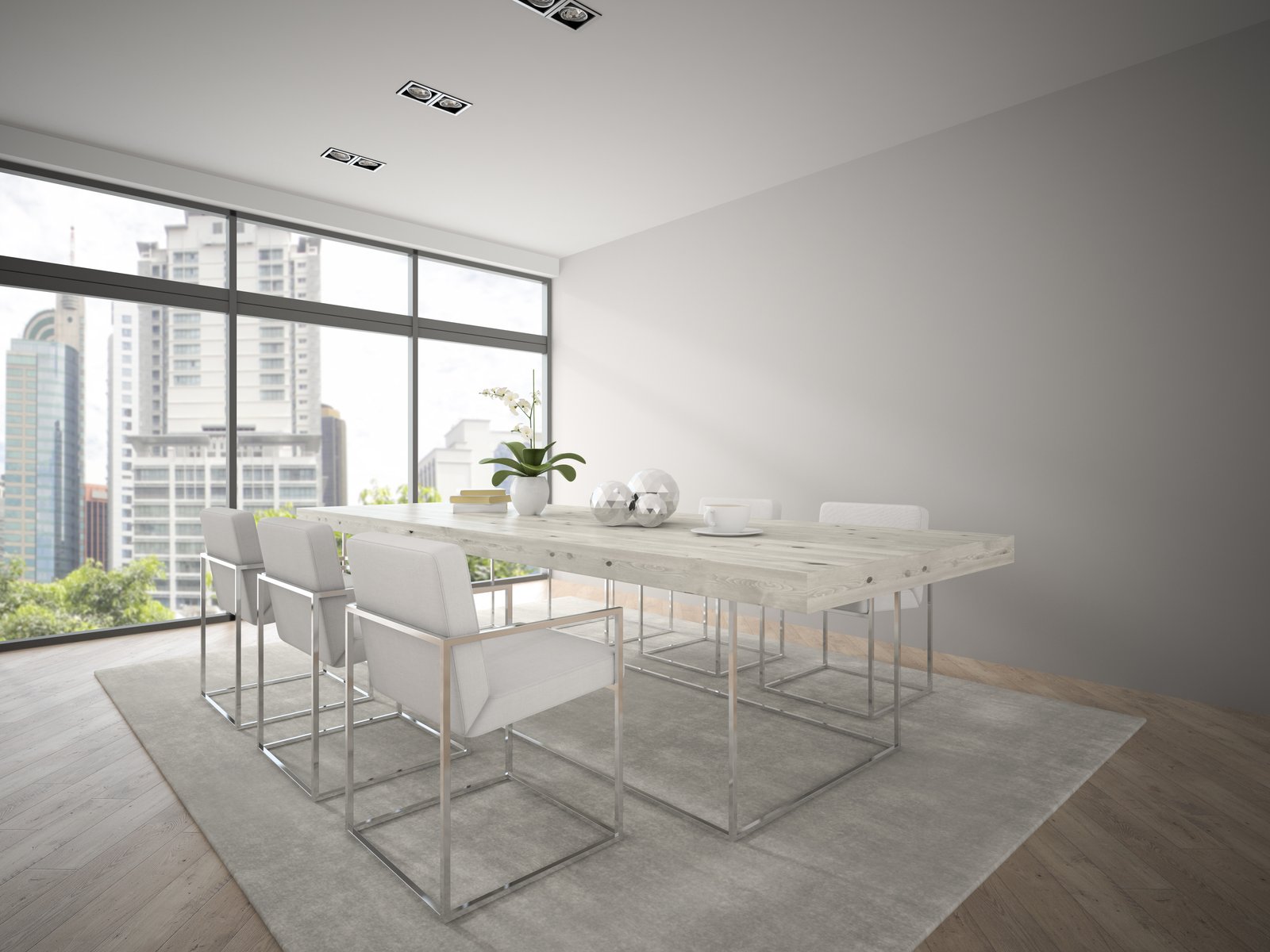
When we analyze the projects in Dubai and Jakarta side-by-side, we see a fascinating contrast in the types of challenges, yet a remarkable similarity in the solutions. In both scenarios, the raw material—steel—is transformed to serve a specific, demanding purpose. The success of that transformation depends entirely on the machinery's ability to control the process with extreme precision and repeatability. The challenges can be broadly categorized into three main areas: environmental and material hurdles6, commercial pressures, and engineering complexity.
Battling the Elements: Environment and Material Science
The environmental challenges in Dubai and Jakarta are polar opposites, yet they both attack the integrity of steel tubing. In Dubai, the combination of intense UV radiation, extreme daily temperature fluctuations (leading to thermal stress), and airborne sand requires tubes, especially those used on building exteriors, to have durable, flawless surfaces and stable material properties. For our client "Gulf Architectural Fabricators," the main issue was ensuring the polished stainless steel finish on their decorative tubes wouldn't degrade and that the tubes themselves could handle the thermal expansion and contraction without compromising the facade's structure. Our precision tube mill, by creating a perfectly uniform tube wall, ensures that stresses are distributed evenly, preventing weak spots. The automated polishing line creates a smooth, non-porous surface that is less susceptible to pitting or degradation from sand abrasion.
Conversely, in Jakarta's offshore environment, the enemy is the warm, highly saline water of the Java Sea, a perfect catalyst for galvanic corrosion and chloride stress cracking. For "Nusantara Offshore," the challenge was producing a carbon steel pipe where the weld was not the weak link. The advanced high-frequency induction welding on our large-diameter mill was the critical factor. By creating a homogenous, forged seam with a minimal heat-affected zone (HAZ), it produces a pipe that resists corrosion just as effectively as the parent material. This eliminated the primary point of failure that plagued them with previous suppliers, providing a solution engineered specifically for marine hostility. In both cases, the machinery directly addressed the core environmental threat by enhancing the material properties of the final product.
The Commercial Crucible: Time, Money, and Waste
In both high-end construction and oil and gas, time is money on an exponential scale. The commercial pressures are immense. A delay in Dubai means pushing back the opening of a billion-dollar hotel. A delay in Jakarta means millions in lost oil production revenue. Advanced tube manufacturing machinery directly addresses this pressure by optimizing the three pillars of commercial efficiency: speed, labor, and material utilization7. Our client in Dubai was able to outbid competitors because our machinery's high material utilization of up to 98% meant their raw material cost was significantly lower. This 2% of waste, compared to 10-15% on older machines, translated into hundreds of thousands of dollars in savings on a single large project.
In Jakarta, the challenge was less about material cost and more about production velocity and reliability to meet a critical installation window. The automated PLC controls on our line allowed "Nusantara Offshore" to run their mill 24/7 with a smaller, less specialized crew. The system's ability to monitor quality in real-time and log data for every pipe meant they didn't have to stop for frequent manual inspections, maximizing uptime. The output rate, which was over 60% faster than their old equipment, was the single biggest reason they were able to deliver the platform jacket components on time.
This highlights a key principle: overcoming commercial challenges isn't just about making things faster. It's about creating a more efficient, less wasteful, and more reliable production ecosystem. The reduction in scrap, the optimization of labor, and the maximization of uptime are how modern machinery provides a direct, measurable return on investment and mitigates the immense commercial risks inherent in these mega-projects.
The Engineering Enigma: From Complex Curves to Brutal Specs
ly, we have the challenge of engineering complexity. Architects in Dubai are no longer designing simple boxes; they are designing complex, algorithmically generated forms that require a vast array of unique component shapes. For "Gulf Architectural Fabricators," the challenge was not just making one type of perfect tube, but making dozens of different profiles, all to the same high standard. The solution was our system's quick-change tooling and flexible PLC controls. Instead of a prohibitive, multi-day setup for a new profile, they could switch over in hours. This made the production of small, custom batches economically viable and allowed them to say "yes" to the architect's most ambitious designs.
In the oil and gas sector, the complexity is not one of shape but of performance specifications. "Nusantara Offshore" had to meet a labyrinth of API standards for material chemistry, tensile strength, dimensional accuracy, and weld integrity. It's a zero-tolerance environment. The challenge was not just to meet these specs, but to prove they were met for every length of pipe. This is where the integrated data logging of our PLC control system was invaluable.
| Challenge Aspect | Dubai (Architectural) | Jakarta (Offshore) | The Overcoming Machine Feature |
|---|---|---|---|
| Primary Hurdle | Aesthetic perfection & geometric complexity | Corrosion resistance & structural integrity | Precision Control & Advanced Welding |
| Key Requirement | Flawless surface, tight tolerance (≤ ±0.05 mm) | High-strength weld, certified material | Automated Polishing & HF Induction Welding |
| Enabling Technology | Quick-change tooling for multiple profiles | Robust heavy-duty frame for thick materials | Flexible & Durable Machine Design |
| Verification | Visual inspection & precise measurement | Ultrasonic testing & automated data logging | Integrated Quality Assurance Systems |
This automated documentation provided an indisputable audit trail, satisfying both the end client and the regulatory agencies without requiring a cumbersome and error-prone manual process. In both Dubai and Jakarta, the machinery overcame engineering complexity not by simplifying the designs, but by providing the precision, flexibility, and intelligence required to execute them flawlessly.
What specific aspects of tube manufacturing machinery made it ideal for these applications?
Choosing new manufacturing equipment feels like a gamble, where the wrong choice leads to defects, waste, and broken promises. What if you could select machinery with proven features that guarantee performance? Investing in the right aspects ensures reliability and a strong return on investment.
Key aspects making the machinery ideal were its precision tolerance (≤ ±0.05 mm) for perfect assembly, fully automated PLC controls for consistency and reduced labor, high material utilization (up to 98%) for cost savings, and robust CNC-machined frames that ensure long-term durability and reliability.
When you dissect the success stories from Dubai and Jakarta, it becomes clear that the results were not accidental. They were the direct consequence of specific, engineered features within the tube manufacturing machinery. For a potential buyer, understanding these core aspects is far more important than looking at top-line numbers like speed or power. It’s about matching the deep capabilities of the machine to the specific demands of the application. I’ve spoken with countless factory owners who have invested in new equipment, and the ones who achieve the greatest success are those who look beyond the brochure and ask the hard questions: How does this feature reduce my operating costs? How does that mechanism guarantee quality? How will this system adapt to my future needs? The machinery used in these demanding projects was not generic; it was selected because it possessed a specific suite of features that, when combined, created a solution perfectly tailored to the high-stakes environment. These aspects are the true drivers of value, turning a capital expenditure into a strategic asset that delivers precision, efficiency, and ultimately, profitability. Let's delve into the most critical of these features.
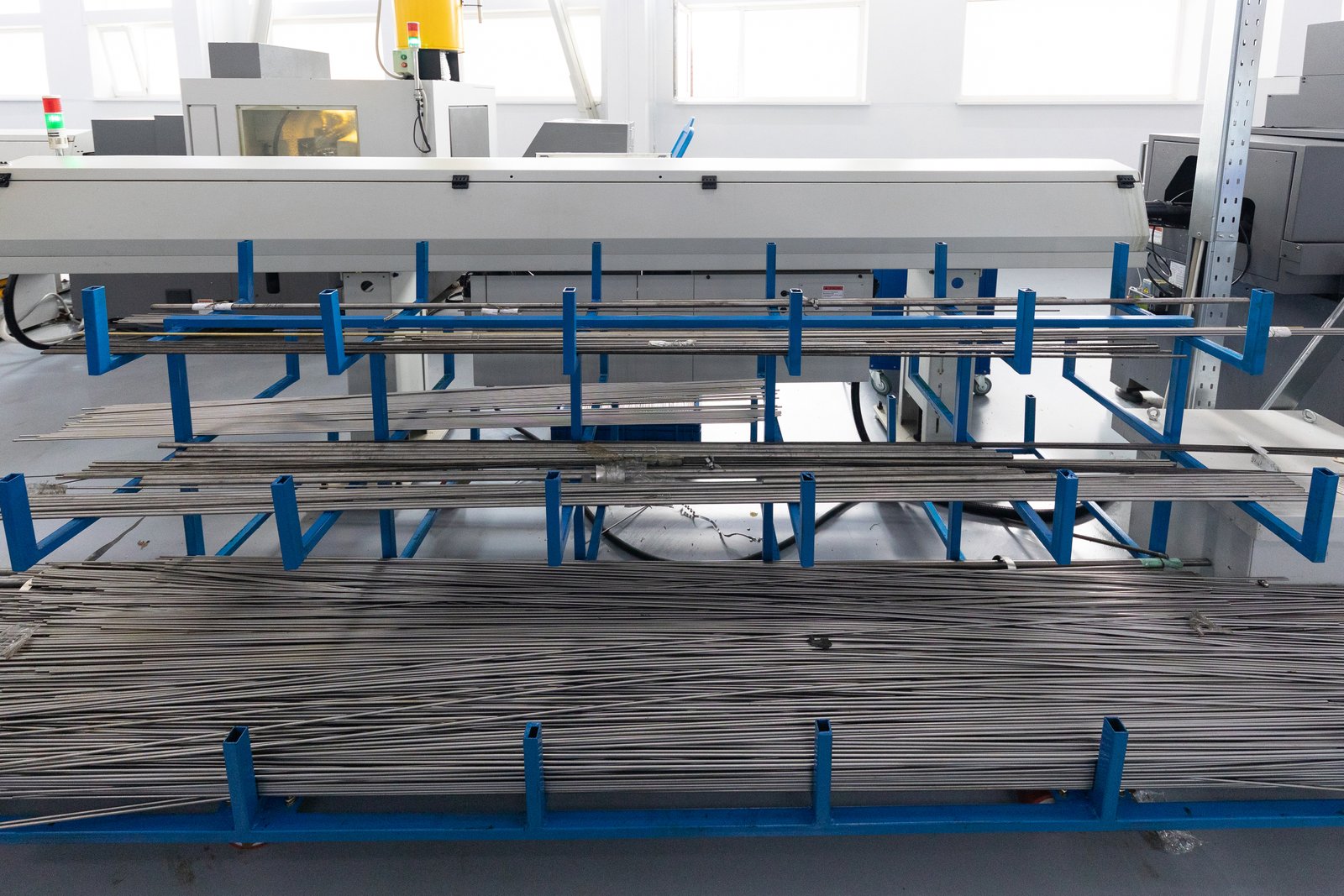
It is the synthesis of several key technological advancements that makes a modern tube mill an indispensable tool for critical applications. While each feature is important on its own, their integration into a single, cohesive system is what creates a truly powerful manufacturing solution. For both the architectural fabricator in Dubai and the pipeline contractor in Jakarta, four aspects were repeatedly cited as being fundamental to their success: precision tolerance, automation and control, material efficiency, and robust mechanical design.
The Bedrock of Quality: Precision Tolerance (≤ ±0.05 mm)
The specified tolerance of ≤ ±0.05 mm is not an arbitrary number; it's a functional necessity in high-stakes applications. In Dubai, for the architectural elements that had to be assembled into a larger, intricate facade, this level of precision was non-negotiable. If a tube's outer diameter varies by even a fraction of a millimeter, it will not fit correctly into a precisely machined node or bracket. This can lead to a cascade of problems on the construction site, requiring manual adjustments, grinding, or even rejection of components, all of which cause delays and escalate costs. Our machinery achieves this tolerance through a combination of high-precision CNC-machined rollers8 and a rigid machine frame that eliminates vibration, ensuring that from the first meter of the tube to the last, the dimensions are identical.
In the context of the Jakarta oil rig, precision tolerance is equally critical, but for different reasons. Here, it relates directly to the integrity of welded connections between pipes. When preparing pipes for butt welding, if the ends are not perfectly round and dimensionally accurate, achieving a full-penetration weld that will pass radiographic inspection is extremely difficult. The precision of our tube mill ensures excellent concentricity and consistent wall thickness, which are foundational for creating reliable, high-pressure pipeline systems.
For my clients, this precision means they can manufacture with confidence. They know that their output will be compatible with other precision-made components, whether it's an architectural fitting or a high-pressure valve. It removes a significant variable from the quality equation and is the first and most important aspect that makes the machinery ideal for applications where "almost perfect" is not good enough.
The Engine of Consistency: Fully Automated PLC + Touch-Screen Control
Automation is the key to removing human variability from the manufacturing process, which is essential for ensuring consistent quality over long production runs. Our fully automated system, controlled by a central PLC (Programmable Logic Controller) via an intuitive touch-screen interface, manages every critical parameter of the tube milling process. This includes welding power and frequency, mill speed, and roller pressure. Once the optimal parameters for a specific job are programmed, the machine can replicate them perfectly, 24/7. This was vital for both the Dubai and Jakarta projects, which required large volumes of tubing produced to an unvarying standard.
For the user, this has profound benefits. It reduces the reliance on highly skilled, veteran operators, which is a major advantage in a tight labor market. A less experienced technician can be trained to oversee the production, confident that the PLC is maintaining quality. I remember the production manager at "Nusantara Offshore" telling me that the PLC system was his "best employee" because it never got tired and never had a bad day. It simply executed the program flawlessly.
Furthermore, this automated control system is the hub for quality assurance. It continuously monitors the process and can be programmed to flag any deviation from the set parameters, often before it results in a defective product. This real-time feedback loop is a powerful tool for process control, and the system's ability to log all data provides the verifiable documentation required by clients and regulatory bodies. It transforms manufacturing from a reactive art to a proactive, data-driven science.
The Driver of Profitability: High Material Utilization and Energy Efficiency
In any manufacturing operation, waste is a direct drain on profitability. Our tube mills are engineered to maximize material utilization, achieving rates up to 98% utilization rate in tube manufacturing9. This is accomplished through advanced roll forming design that minimizes edge trim scrap and a precise flying cut-off saw that ensures accurate lengths with minimal waste. For a project like the Dubai skyscraper, which used expensive, high-grade stainless steel, reducing scrap from a typical 15% down to 2% resulted in direct, substantial cost savings that went straight to the bottom line and made their bid more competitive.
Alongside material savings, energy efficiency is a growing consideration. The high-frequency induction welders10 used in our lines are inherently more energy-efficient than older welding technologies. They focus the energy precisely where it's needed—on the edges of the strip—resulting in faster welding speeds with lower overall power consumption. Over the life of the machine, this reduction in energy cost can be significant.
This focus on efficiency has a dual benefit. It not only improves the manufacturer's profitability but also enhances their sustainability credentials. By using less material and less energy per meter of tube, our clients can market their products as a greener, more responsible choice, which is an increasingly important factor in public and private tenders. It's a clear example of how smart engineering can align economic and environmental goals.
| Feature | Technical Specification | Benefit for Dubai (Architectural) | Benefit for Jakarta (Offshore) |
|---|---|---|---|
| Precision Tolerance | ≤ ±0.05 mm | Guarantees perfect fit-up of facade components. | Ensures pipe ends are perfect for high-integrity welds. |
| Automation | PLC + Touch-Screen | Ensures consistent mirror polish & dimensions. | Maintains constant weld parameters for API compliance. |
| Material Utilization | Up to 98% | Reduces cost of expensive stainless steel. | Minimizes waste of specialized carbon steel. |
| Machine Frame | Robust CNC-Machined | Eliminates vibration for flawless surface finish. | Provides stability for heavy-wall pipe production. |
This holistic approach to efficiency—saving materials, energy, and labor—is what makes the machinery a powerful financial tool, not just a production tool.
What lessons can be learned from these real-world applications of tube manufacturing machinery across different industries?
It's easy to view past projects as unique success stories, but difficult to extract repeatable lessons for your own business. How can you apply these wins to your future investments? By identifying the core principles, you can develop a clear strategy for technology acquisition.
Key lessons include the universal importance of precision, as it underpins quality in both aesthetics and structural integrity. Furthermore, investing in automation and flexible, reliable machinery is a proactive strategy that drives long-term efficiency and profitability across diverse industrial and architectural applications.
Stepping back from the specific details of glittering skyscrapers and rugged oil rigs, we can see a set of powerful, overarching lessons emerge. These are not just observations about tube manufacturing; they are fundamental truths about modern industrial success. For years, I’ve seen companies grapple with investment decisions, often getting bogged down in comparing spec sheets or focusing too heavily on the initial purchase price. The most successful businesses, however, look at machinery as a strategic capability. They ask, "What will this investment allow us to do that we can't do today?" The experiences in Dubai and Jakarta provide a clear blueprint. They teach us that while the end products may be vastly different—one designed for visual appeal, the other for brutal functionality—the foundational requirements for manufacturing excellence are remarkably consistent. These lessons revolve around an uncompromising commitment to quality, a strategic embrace of technology, and a forward-looking view of partnership and investment. For any manufacturer looking to thrive in a competitive global market, these takeaways are not just helpful; they are essential for building a resilient and profitable future.
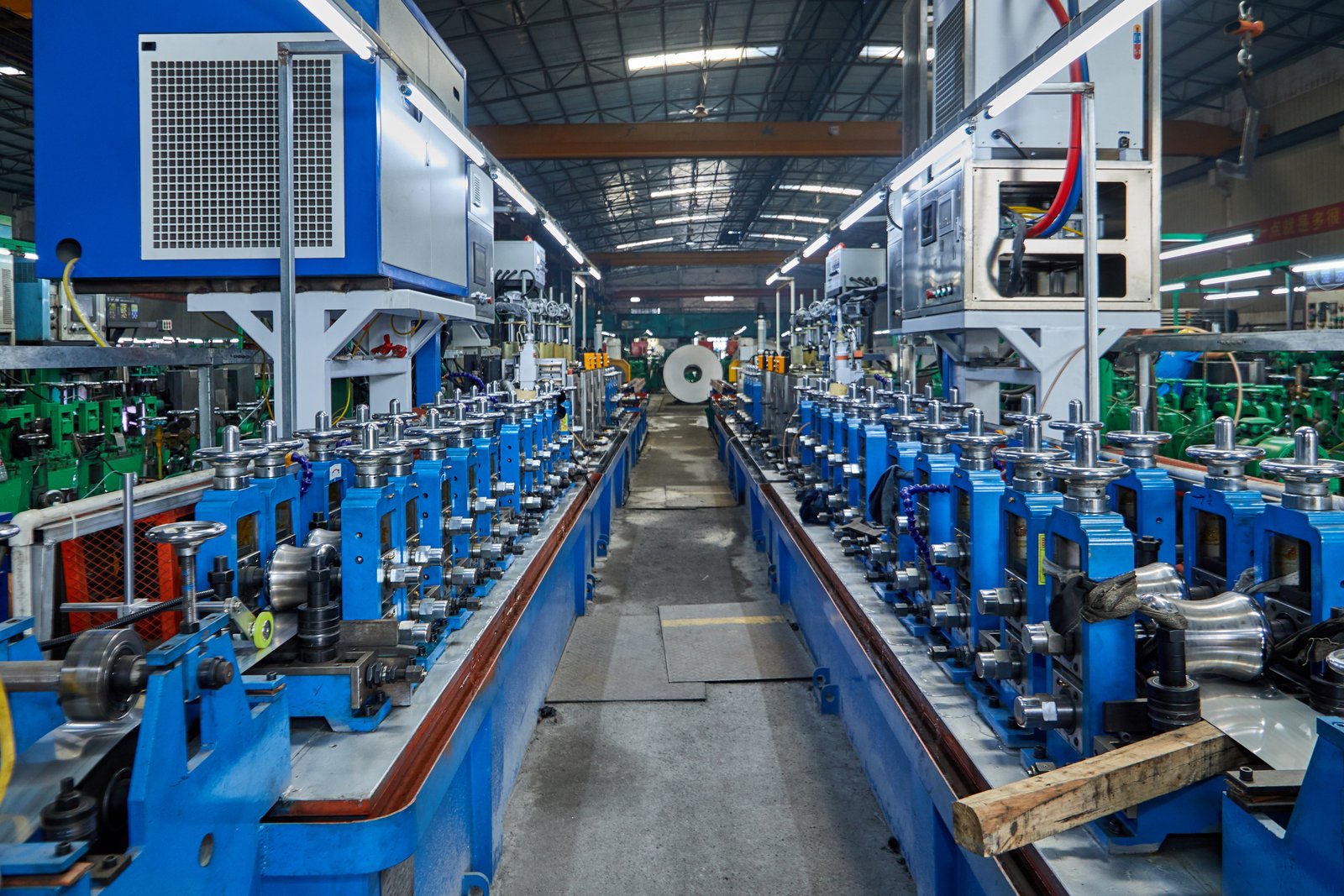
The real value in analyzing these case studies11 lies in distilling them into actionable intelligence that can guide future decisions. The lessons learned are applicable to any tube producer, whether they are making furniture, automotive components, or large-scale industrial pipes. They provide a framework for thinking about technology, quality, and market positioning in a way that transcends any single industry.
Lesson 1: Precision is the Universal Language of Quality
The most profound lesson is that precision is not a feature; it's the foundation. In Dubai, precision (≤ ±0.05 mm tolerance) translated into aesthetic perfection and seamless assembly. In Jakarta, that same level of precision translated into weld integrity and operational safety. This demonstrates that whether the primary risk is visual rejection by an architect or catastrophic failure in a high-pressure environment, the solution begins with dimensional control. Companies that compromise on precision to save on initial machine costs will inevitably pay a much higher price downstream in the form of waste, rework, customer claims, and reputational damage.
I once consulted for a company producing automotive exhaust components. They were struggling with high rejection rates from their Tier 1 customer because of poor fit-up during robotic assembly. Their tube mill produced pipes with a tolerance of ±0.25 mm, which they thought was acceptable. After upgrading to a high-precision line, their rejection rate dropped to nearly zero. The investment paid for itself in less than a year through the elimination of waste and penalties alone.
This principle holds true across the board. For a furniture maker, precision means joints are tight and the product feels solid. For a heat exchanger manufacturer, it means tubes fit perfectly into the tube sheets, ensuring optimal thermal performance. The lesson is clear: invest in the highest level of precision you can. It is the single most important characteristic of a machine and the most direct contributor to the quality of your end product, regardless of the industry you serve.
Lesson 2: Proactive Technology Investment vs. Reactive Problem Solving
The second key lesson is about mindset. The companies that succeeded in these challenging projects did not wait for a problem to occur before seeking a solution. They made a proactive investment in advanced technology as a strategic hedge against future challenges. The contractor in Dubai knew that architectural demands would only get more complex. The EPC firm in Jakarta knew that offshore standards would only become more stringent. They invested in flexible, automated, and reliable machinery before it was an emergency. This is a stark contrast to the reactive approach of "making do" with older equipment until a major failure or loss of contract forces an upgrade.
This proactive approach changes the entire business dynamic. Instead of being a price-taker, forced to compete on cost alone, a manufacturer with superior technological capabilities can become a solution-provider. They can confidently bid on more complex, higher-margin projects that their competitors with lesser equipment cannot. They can promise and deliver a level of quality and consistency that builds deep customer loyalty.
Consider the role of automation. A company that waits until labor costs become untenable to automate is already behind the curve. A company that invests in automation proactively, like our clients did, gains an immediate advantage in consistency, uptime, and data-driven quality control. The lesson is to view technology investment not as a cost to be minimized, but as a strategic enabler of future growth and resilience. Don't wait for the fire to buy the fire extinguisher.
Lesson 3: The Machine is the Beginning, Not the End, of the Partnership
Finally, a crucial lesson that is often overlooked is the importance of the relationship with the equipment provider. In both the Dubai and Jakarta cases, our role at XZS did not end when the machine was delivered. We provided turnkey solutions, which included installation, commissioning, and training. This is part of our core business model. For the client, this means they are not just buying a piece of hardware; they are acquiring a production capability and a support system.
When "Nusantara Offshore" needed to optimize their mill for a particularly thick-walled steel grade, our engineers provided remote support, analyzing their production data and suggesting refined parameters for the PLC. When "Gulf Architectural Fabricators" wanted to integrate a new type of polishing head into their line, our team worked with them to ensure seamless integration. This collaborative approach is essential for maximizing the long-term value of the investment.
The most successful manufacturers understand this. They don't just look for a supplier; they look for a partner who has deep domain expertise and a vested interest in their success. The lesson for any buyer is to scrutinize the after-sales service, technical support, and customization capabilities of a potential vendor. A robust, reliable machine is critical, but a robust, reliable partnership is what ensures that the machine continues to deliver value for years to come, adapting to new challenges and new market opportunities.
Conclusion
Ultimately, advanced tube manufacturing machinery is the unseen hero behind modern progress. From Dubai's skyline to Jakarta's energy sector, its core attributes of precision, automation, and reliability are not just features—they are the fundamental enablers of safety, efficiency, and visionary engineering worldwide.
-
Understand global trends driving the steel tubing market and manufacturing investments ↩
-
Discover stainless steel’s unique benefits for durability and aesthetics in modern architecture ↩
-
Discover the engineering challenges unique to offshore platforms and why failures are so costly ↩
-
Explore case studies and data linking manufacturing technology with project success ↩
-
See what API standards require for pipe quality and why meeting them matters in offshore environments ↩
-
Get context on key environmental factors influencing steel tube performance worldwide ↩
-
See the business advantages of improved efficiency in modern tube production lines ↩
-
Explore how CNC technology ensures consistent tube dimensions and surface quality. ↩
-
Discover the engineering behind maximizing usable material with minimal scrap in tube mills. ↩
-
Understand the efficiency and quality benefits of high-frequency induction welding technology. ↩
-
See practical examples of how tube manufacturing equipment transforms outcomes across industries ↩

